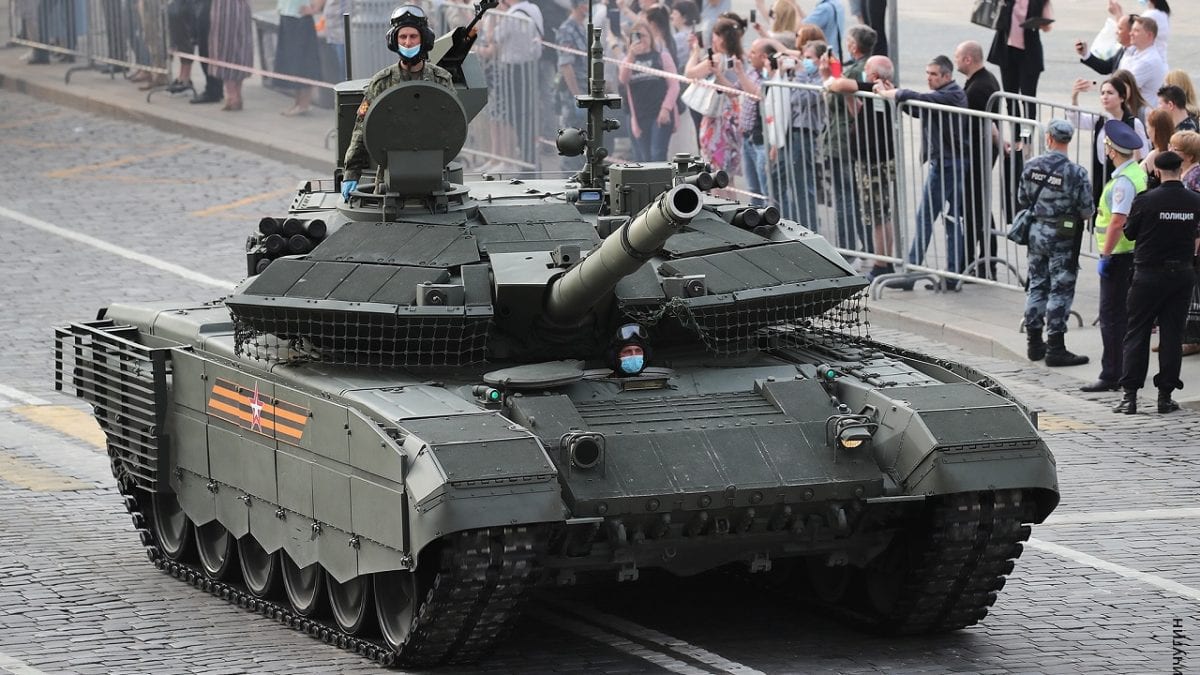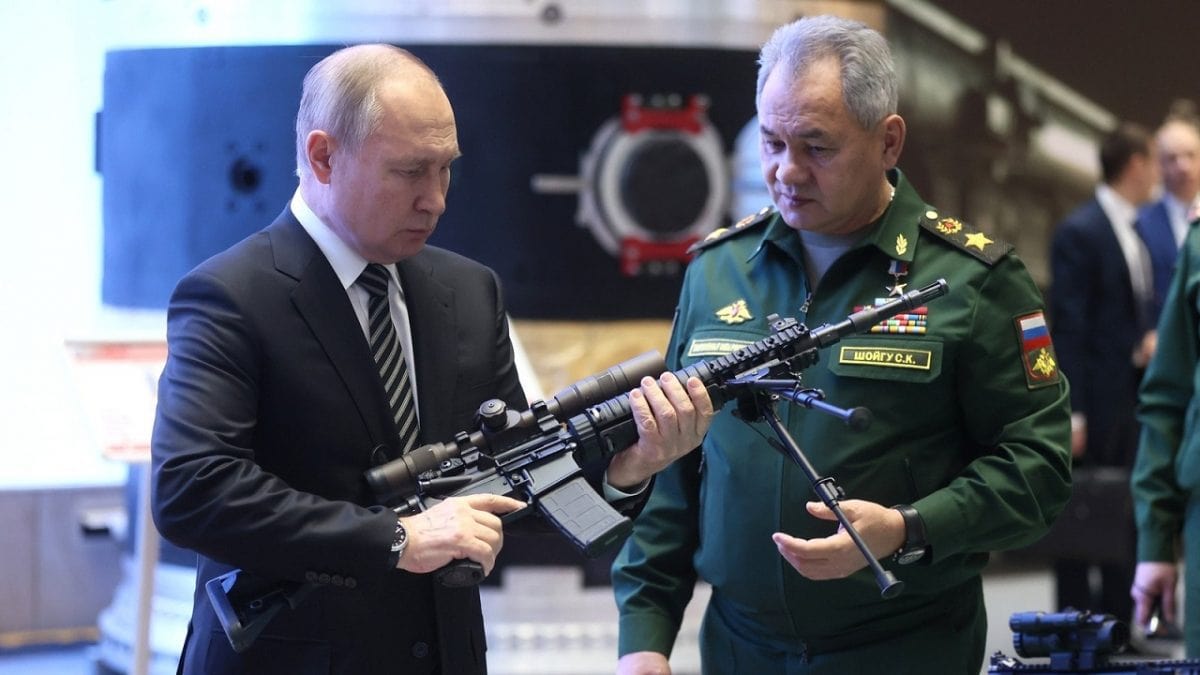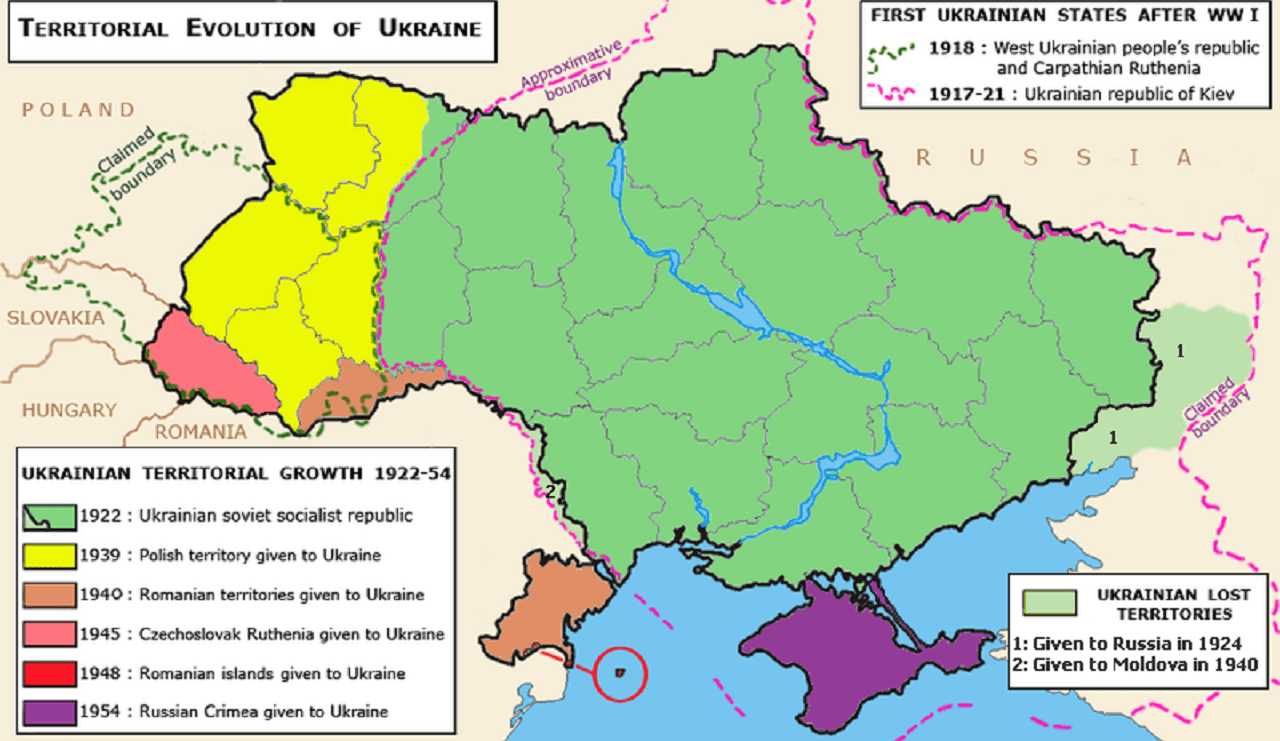If Russia launches a war against Ukraine, it will be far from the first time even in recent memory that the country has known violence. Many parts of the world suffered horribly from war in the 20th century, but Ukraine has surely witnessed more than its fair share of warfare over the last 110 years.
In World War I, Ukraine was the site of several major battles, most notably the Battle of Galicia in 1914, the Brusilov Offensive of 1916, and the Kerensky Offensive of 1917. At Galicia (fought in what is now western Ukraine) Russian forces tore the heart out of the armies of Austria-Hungary, restoring the line after the disastrous defeat at Tanneberg. The Brusilov Offensive cut deep into German and Austrian lines, displaying in full for the first time the fire and movement tactics that have come to characterize modern warfare for the last century. The failed Kerensky Offensive represented the last gasp of Russia’s provisional government, paving the way for the Bolshevik Revolution. Overall, counting only the major battles the armies of the combatants suffered nearly three million casualties in Ukraine.
The end of World War I did not end the fighting. As discussed in an earlier column, German, Ukrainian, Polish, and Russian forces of armies of both the White and Red varieties swept over Ukraine in the two years after the Treaty of Brest-Litovsk formally ended fighting in the east. The Soviet-Polish War inflicted some half a million casualties on all sides, with much of the fighting taking place within modern Ukrainian borders. At the same time, a complex war between the Bolsheviks, Pyotr Nikolayevich Wrangel’s White Russians, and Ukrainian anarchists burned in the southern half of the country, culminating in the escape by sea of a reside of Wrangel’s forces from Crimea.
These battles would only be exceeded by the horrors of the Second World War. German troops focused mostly on western parts of Poland during their invasion of September 1939, leaving the east (areas which would eventually become part of Ukraine) to the Soviets. The Red Army crossed the border on September 17 and rapidly rolled up the country, although not without violence. Far more violent were the events of late June 1941, when the Wehrmacht and its allies launched a massive invasion of the Soviet Union, including Ukraine.
Several of the most important early battles of Operation Barbarossa took place in Ukraine. The first week saw a massive tank battle at Brody, in which the Germans destroyed some 800 Soviet tanks at the loss of 200 of their own. In July the Wehrmacht annihilated two Soviet armies at the Battle of Uman, resulting in 20,000 German casualties against more than 200,000 Red Army. This opened the door to Kyiv, which was besieged in mid-September. Some 600,000 Soviet troops were killed or captured when the pocket surrendered in late September. In October another Soviet army including over 100,000 troops was surrounded and captured near the Sea of Azov. Kharkiv and the Donbas fell in October. Most of the prisoners taken by the Germans would die of starvation in forced labor camps.
The grim course of the war on the Eastern Front meant that every place the Germans had taken would need to be retaken by the Soviets. Kharkiv changed hands several times, with the Soviets finally gaining permanent control in August 1943. A massive offensive along the Dnieper in late 1943 reclaimed much of the rest of Ukraine, including Kyiv. The final German evacuation of Ukraine came on October 28, 1944.
All of these wars had a dreadful impact on civilians. German occupation practices were horrific, with outright massacres of the Jewish population accompanied by general policies of starvation. Estimates of the total number of dead exceed 7 million, more than those killed in Germany itself. Although the devastation of World War I was less deliberate, the use of Ukraine as a breadbasket by both Russia and the Central Powers had a devastating effect on the local population. This is of course to say nothing of the Holodomor, the famine that gripped Ukraine in 1932-3 and that killed several million.
And of course, Ukraine’s travails did not end with World War II. From 1945 until 1990 Ukraine knew the uncertain peace of Soviet rule. Independence was accomplished with minimal violence until 2014 when a revolution in Kyiv inspired a Russian invasion of Ukraine’s east and south. That war, which continues in some form until this very day, has by most estimates killed nearly 15000 people.

Russian T-90 Tank. Image Credit: Creative Commons.

Russian President Putin with Russian Military Forces. Image Credit: Creative Commons.
It is tempting to conclude that some geographic spaces are prone to witness great battles, but in fact, politics and technology set the terms by which geography matters. The corridor between New Jersey and central Virginia saw bitter combat over the course of nearly 250 years from 1620 until 1870 but has remained almost completely at peace since 1865. The Rhine, which witnessed catastrophic if periodic warfare for centuries, has been at peace since 1945. There is real hope, thus, that Ukraine’s future may be less violent than Ukraine’s past, notwithstanding the massive foreign army sitting upon its borders.
Now a 1945 Contributing Editor, Dr. Robert Farley is a Senior Lecturer at the Patterson School at the University of Kentucky. Dr. Farley is the author of Grounded: The Case for Abolishing the United States Air Force (University Press of Kentucky, 2014), the Battleship Book (Wildside, 2016), and Patents for Power: Intellectual Property Law and the Diffusion of Military Technology (University of Chicago, 2020).

